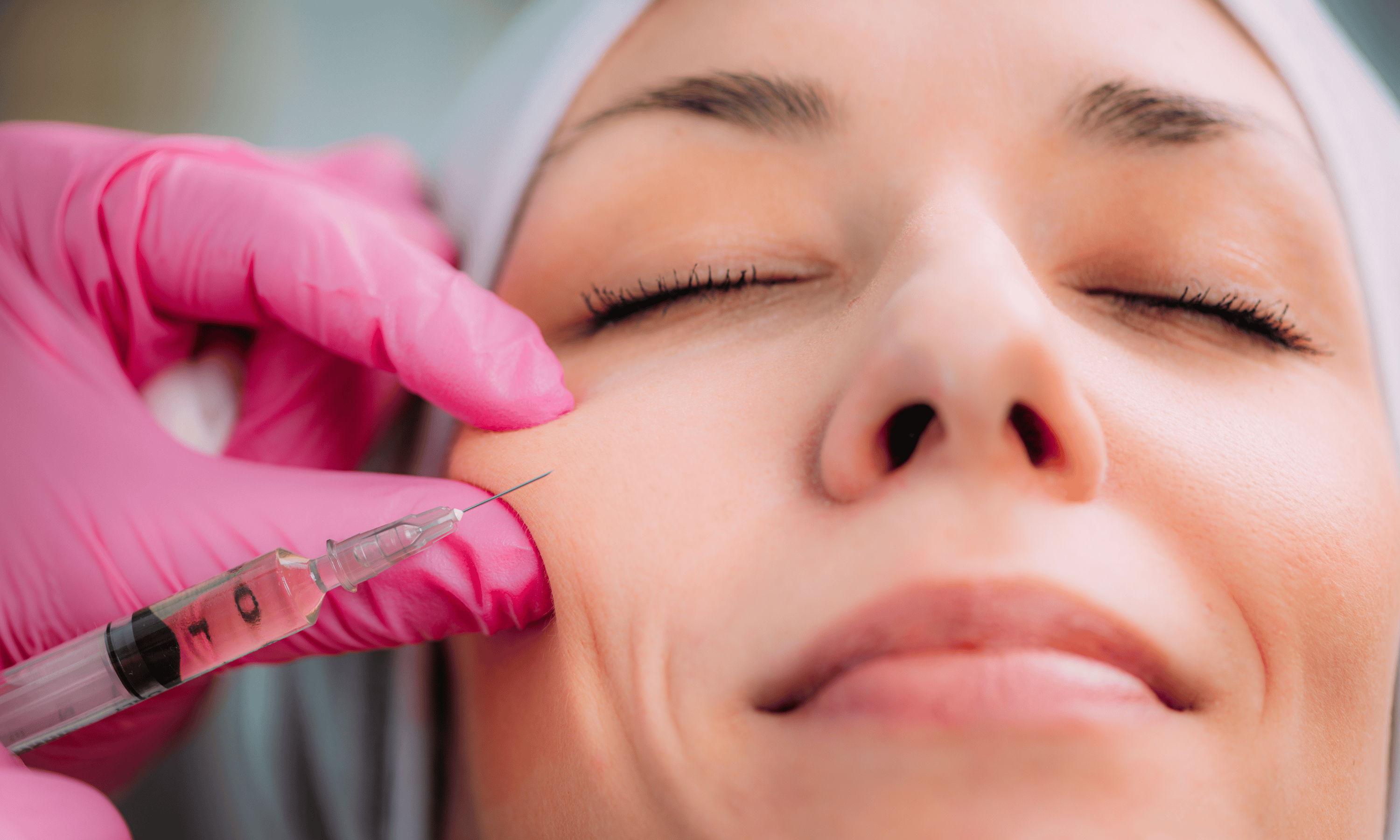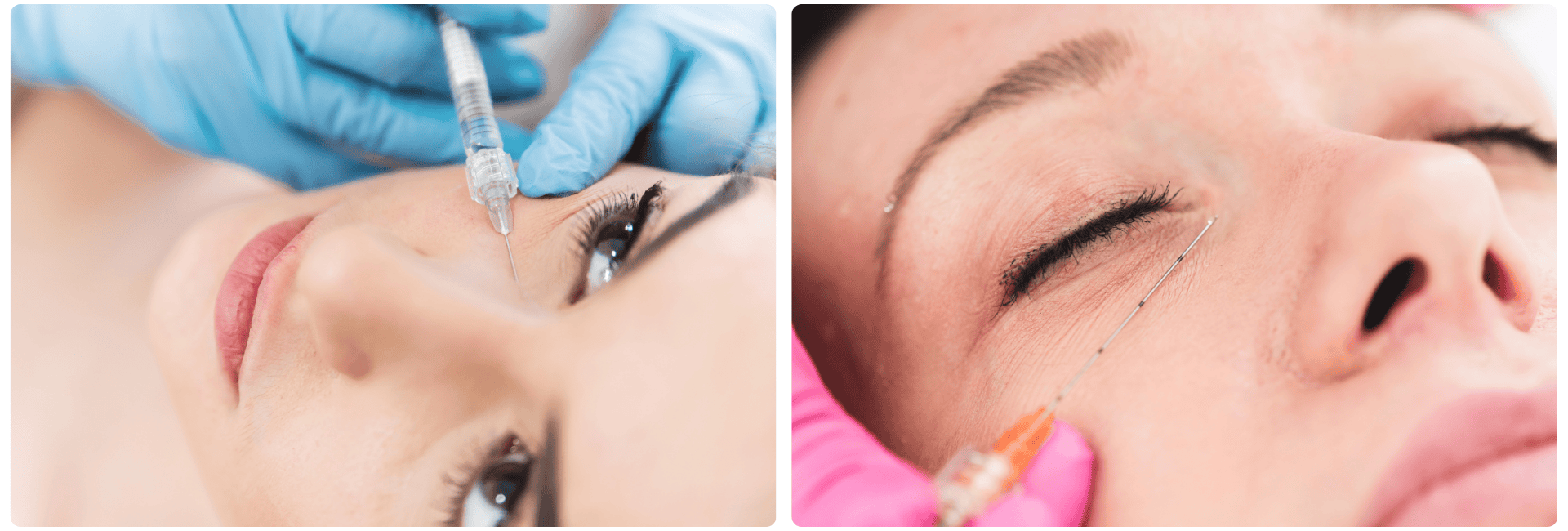
Tear trough fillers: An objective exploration
In the realm of aesthetic treatments, the use of fillers to address the tear trough area is a topic of much discussion. Tear troughs, the areas beneath the eyes often associated with fatigue or aging, can be significantly improved using fillers. In this blog, we will take an objective and informative look at tear trough fillers, their application, and key considerations.
What are tear trough fillers?
Tear trough fillers, alternatively referred to as under-eye fillers or infraorbital fillers, involve the injection of substances beneath the eyes to address specific concerns in that area. Hyaluronic acid fillers are commonly utilized for this purpose, leveraging their hydrating properties and compatibility with the body. The primary goal of this treatment is to add volume to the tear trough, promoting a smoother transition between the eyes and the cheeks. By doing so, tear trough fillers can effectively diminish the appearance of under-eye hollows and contribute to a more rejuvenated and refreshed overall facial appearance.
How do tear trough fillers work?
In the course of tear trough filler treatment, a skilled physician delicately administers the filler into the area beneath the eyes, typically employing a fine needle or cannula. The hyaluronic acid content in the filler acts as a magnet for water, promoting a fuller and hydrated appearance in the treated area. This effect aids in diminishing shadows and contributes to an overall improvement in the appearance of fatigue. The precise and careful administration of the filler ensures a natural-looking outcome, addressing specific concerns related to under-eye hollows and enhancing the facial rejuvenation achieved through tear trough fillers.
Key considerations for tear trough fillers
- Professional assessment: An experienced physician should first conduct a thorough assessment to determine if tear trough fillers are the most suitable solution. Sometimes, a combination of treatments may be more effective.
- Temporary nature of results: Tear trough fillers generally offer temporary results, typically ranging from six months to a year. Regular maintenance treatments may be necessary to maintain the results.
- Potential side effects: Like any medical procedure, there are potential side effects, including swelling, bruising, and mild discomfort at the injection sites. These side effects are usually mild and resolve over time.
- Cost considerations: The costs of tear trough fillers vary depending on factors such as the type of filler and the experience of the practitioner. It is important to consider these costs when making a decision.
Tear trough fillers can be an effective solution for individuals bothered by dark circles or deep grooves beneath the eyes. However, it is crucial to be well-informed and consult with an experienced professional to have realistic expectations and explore the appropriate treatment options. An open conversation with a qualified physician will help understand individual needs and make informed decisions.

Filler (1 mL) costs around the world
The cost of dermal fillers can vary significantly depending on the country and region where the procedure is performed. Below is a comparison of prices in 20 different countries, converted into US dollars (USD) for clarity:
- United States: $500 - $1,500 USD per mL
- United Kingdom: £300 - £700 GBP per mL (approx. $400 - $930 USD)
- Canada: $500 - $1,200 CAD per mL (approx. $390 - $940 USD)
- Australia: $600 - $1,500 AUD per mL (approx. $440 - $1,100 USD)
- Germany: €300 - €800 EUR per mL (approx. $340 - $890 USD)
- France: €300 - €700 EUR per mL (approx. $340 - $780 USD)
- Brazil: R$800 - R$2,000 BRL per mL (approx. $150 - $380 USD)
- Mexico: $2,000 - $5,000 MXN per mL (approx. $100 - $250 USD)
- Japan: ¥30,000 - ¥80,000 JPY per mL (approx. $270 - $730 USD)
- South Korea: ₩300,000 - ₩1,000,000 KRW per mL (approx. $260 - $860 USD)
- India: ₹15,000 - ₹50,000 INR per mL (approx. $200 - $670 USD)
- South Africa: R2,000 - R8,000 ZAR per mL (approx. $130 - $520 USD)
- UAE (Dubai): 700 - 3,000 AED per mL (approx. $190 - $820 USD)
- Saudi Arabia: 700 - 3,000 SAR per mL (approx. $190 - $800 USD)
- Russia: 5,000 - 20,000 RUB per mL (approx. $70 - $270 USD)
- China: ¥800 - ¥2,000 CNY per mL (approx. $120 - $310 USD)
- Spain: €300 - €800 EUR per mL (approx. $340 - $890 USD)
- Italy: €300 - €700 EUR per mL (approx. $340 - $780 USD)
- Netherlands: €300 - €800 EUR per mL (approx. $340 - $890 USD)
- Switzerland: CHF 500 - CHF 1,500 per mL (approx. $540 - $1,630 USD)
These prices are approximate and can vary based on factors such as the type of filler used, the specific brand, the injector's expertise, and the clinic's location within each country. It's important to consult with qualified professionals and thoroughly research before undergoing a dermal filler procedure.
Questions patients can ask when considering fillers
Fillers are popular cosmetic treatments used to add volume, reduce wrinkles, and enhance contours, often utilizing injectable gel substances like hyaluronic acid. For those considering this treatment, it's important to ask the following questions during the consultation:
- What types of fillers do you offer?
What types of fillers do you offer, and what are the differences between these products? Which type of filler would be most suitable for my specific needs and skin type? - What are the potential risks and side effects of fillers?
What are the potential risks and side effects during and after the filler treatment? How are these risks managed, and what measures are taken to prevent complications? - What results can I expect from the filler treatment?
What kind of results can I realistically expect from the filler treatment? How long will it take to see the final results, and how long will the results last? - Can I see examples of results in other patients?
Can you show me before and after photos of patients who are similar to my situation and treatment goals? This will help me better understand what is achievable with fillers. - What is the total cost of the filler treatment, and what is included?
What are the estimated costs of the filler treatment, including the product itself, the injection session, and any follow-up appointments? Are there any additional costs that I should consider? - What is your experience and training in administering fillers?
How many filler treatments have you performed, and what is your specialization in this area? Are you certified by an accredited medical organization?
Asking these questions during the consultation will provide you with detailed information about the filler treatment and help you make an informed decision about whether this option is suitable for achieving your cosmetic goals. Each individual is unique, so discussing your specific concerns and expectations with an experienced cosmetic practitioner is essential for a successful treatment outcome.


